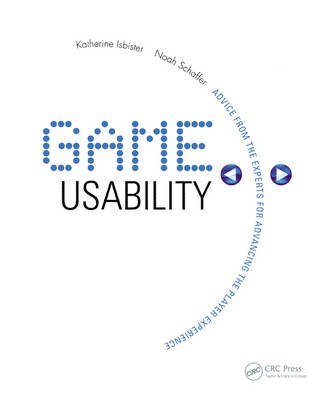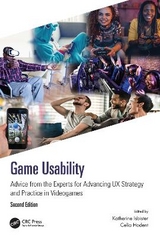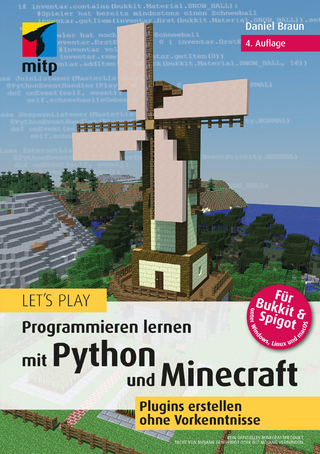
Game Usability
Focal Press US (Verlag)
978-0-12-374447-0 (ISBN)
- Titel erscheint in neuer Auflage
- Artikel merken
Computers used to be for geeks. And geeks were fine with dealing with a difficult and finicky interface--they liked this--it was even a sort of badge of honor (e.g. the Unix geeks). But making the interface really intuitive and useful--think about the first Macintosh computers--took computers far far beyond the geek crowd. The Mac made HCI (human computer interaction) and usability very popular topics in the productivity software industry. Suddenly a new kind of experience was crucial to the success of software - the user experience. Now, 20 years later, developers are applying and extending these ideas to games.
Game companies are now trying to take games beyond the 'hardcore' gamer market--the people who love challenge and are happy to master a complicated or highly genre-constrained interface. Right about now (with the growth of interest in casual games) game companies are truly realizing that usability matters, particularly to mainstream audiences. If it's not seamless and easy to use and engaging, players will just not stay to get to the 'good stuff'.
By definition, usability is the ease with which people can emplo a particular tool in order to achieve a particular goal. Usability refers to a computer program's efficiency or elegance. This book gives game designers a better understanding of how player characteristics impact usability strategy, and offers specific methods and measures to employ in game usability practice. The book also includes practical advice on how to include usability in already tight development timelines, and how to advocate for usability and communicate results to higher-ups effectively.
Associate Professor, Department of Language, Literature and Communication, RPI; Director of the Games Research Lab, RPI; Chair of the MS in HCI Program, RPI. Katherine is Director of the Games Research Lab at Rensselaer (RPI), where she has worked to build an undergraduate major in game design, as well as a robust program of games-related research. She is also the Chair of the MS in HCI at RPI, which she helped to redesign to address current challenges facing HCI practitioners, such as the design of games and other social and leisure applications. Katherine is a former MK Game author, having written: Better Game Characters by Design: A Psychological Approach, which was nominated for a Game Developer Magazine Front Line award in 2006. She has published work in a wide variety of venues, and has given invited talks at research and academic venues including Sony research labs in Japan, Banff Centre in Canada, IBM, the Royal Institute of Technology in Stockholm, and others. The Games Research Lab at RPI has cutting-edge facilities for user studies, and Isbister has used the lab to research innovative methods in user testing (e.g. the Sensual Evaluation Instrument - a project nominated for Best Paper award at the CHI conference in 2006). Isbister has worked in both research and commercial settings on HCI and usability aspects of games and other products. This background, combined with strong connections to game industry practitioners, makes her well suited to put together an edited volume on games usability that is both rigorous and useful to developers in their everyday work.
Knowing the User; Methods; Measures; Special Contexts; Pulling it all Together
| Verlagsort | Burlington |
|---|---|
| Sprache | englisch |
| Maße | 191 x 235 mm |
| Themenwelt | Informatik ► Software Entwicklung ► Spieleprogrammierung |
| ISBN-10 | 0-12-374447-4 / 0123744474 |
| ISBN-13 | 978-0-12-374447-0 / 9780123744470 |
| Zustand | Neuware |
| Haben Sie eine Frage zum Produkt? |
aus dem Bereich



